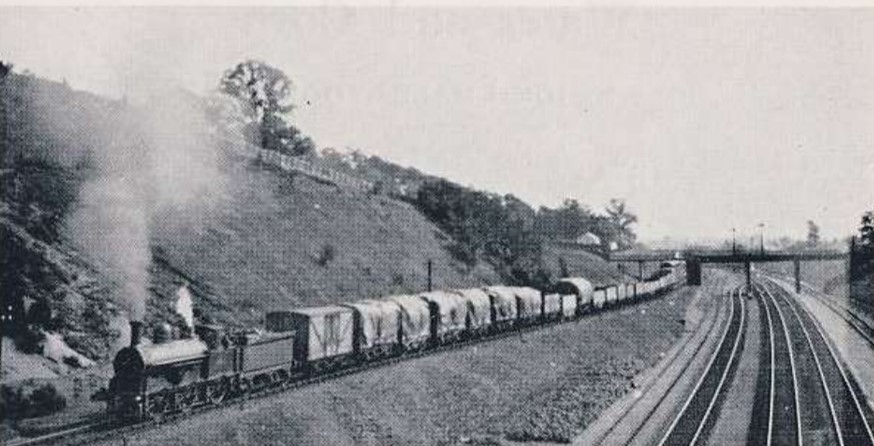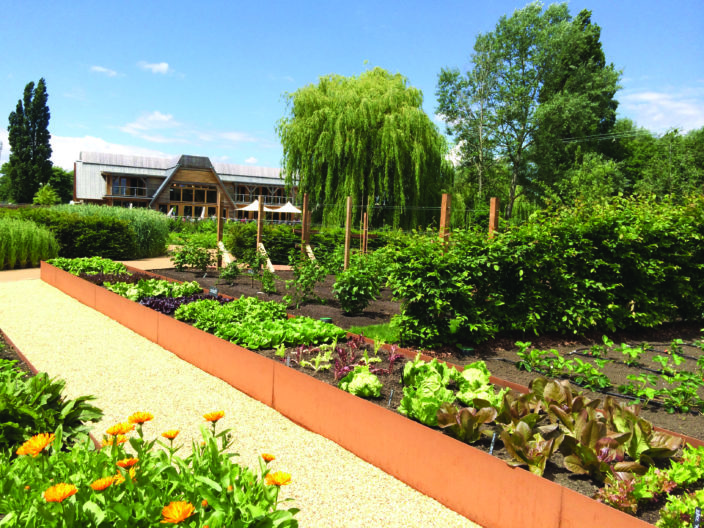
Market gardening in Greensand Country
A significant part of Greensand Country’s agricultural history is based around market gardening: the production of vegetables and salad crops on a small to medium scale, as opposed to the larger scale production of cereal crops. Within Greensand Country, there are two hot-spots that have a rich history of market gardening, the Ivel valley between Biggleswade, Sandy, and Potton, and the Maulden/Clophill area.
The terraces of the Ivel Valley have long been identified with the tradition of market gardening. Before the Enclosure Acts of the late eighteenth and early nineteenth centuries, the terraces were used to expand vegetable production beyond cottage gardens. The unique geology of Greensand Country played a major role in making this possible. The mix of gravel, sand, and clay of the Ivel terraces provided free draining soils that were more suited to cultivation than the poor quality heathland that dominated the area into the nineteenth century. A similar mix of soils in Maulden and Clophill again promoted cottage gardens to expand their growing into unenclosed land.

Why market gardening?
For many of us today, market gardening doesn’t seem the obvious agricultural use for land, and without any form of mechanized farming was hugely labour intensive. However, the early roots of market gardening lie in a landscape substantially different to one we see today. Before the Enclosure Acts, the familiar patterns of separated fields were not used. It is therefore likely that market gardening first grew out of a need to supplement the family diet with vegetables grown within small patches of land near cottages. In the Ivel valley, the absence of a nearby large market town (such as Luton or Bedford) created a more local market for vegetables, with surpluses being sold within the surrounding villages. To begin with, cucumbers and onions dominated, with a wider diversity of crops produced over the nineteenth century as demand changed.
In the late nineteenth century, as imported cereals became commonplace and thus the prices dropped, market gardening become more attractive and profitable compared to domestic cereal production. This drove more land to be used for vegetable crops.

Who were market gardeners?
Whilst most cottagers with even the smallest scrap of land might have grown some basic produce for their own consumption, market gardeners intending to sell crops were a smaller section of rural society. Between 1820 and 1830, nearly 20% of the children born in Sandy were born to gardeners, highlighting just how prevalent market gardening was. However, the high prices for garden land, combined with the need to extensively fertilize the soil to produce high yields, meant that market gardeners were often those that owned land or property rather than the poorest tenants.
Even into the twentieth century, market gardening was still considered vital to the rural economy, and a key step in turning agricultural labourers into farmers. Land was purchased by Bedfordshire County Council for exactly this purpose, with the Duke of Bedford also running his own small-holding scheme in Maulden in 1911 to encourage market gardening. After the First World War, local authorities gave preference to ex-servicemen that were interested in land for market gardening. However, providing land with limited facilities and support limited the growth of these new market gardeners.

Selling further afield
Even before the opening of the railway in the Ivel valley in 1850, there was already a strong trade that extended beyond the villages. Road transport, later supplemented by the railways, allowed vegetables from the Ivel valley to be traded at the Covent Garden market, with London manure brought back to fertilise the fields. As suburbs spread over land once used for agriculture, the production in the Ivel valley saw an increased demand. These were often potatoes and runner beans, sheltered by crops of rye and onions to protect them from the elements. Market gardening also led to the rise of farm merchants, often potato merchants, who would source produce locally and retail it further afield.
By the late nineteenth century, Brussel sprouts had taken off as a popular crop, dominating the acreage of the Ivel valley. Such was this spread that the area between Biggleswade, Potton, and Sandy has become known as the Brussel sprout triangle.
Petter Ibbett recalls his childhood, with his parents running an Ironmongers shop in Potton that supplied local market gardeners with the tools they needed.
“One item is a Planet Junior Hoe, used by Market Gardeners on the local light sandy soils, which came in wooden boxes. I used to enjoy the task of unpacking and assembling these hoes. It was still a time when one family could live from a Land Settlement plot or a Market Garden Field and gangs of men and boys picked Brussel sprouts and hoed the weeds from the fields.”

Downturn in market gardening
Whilst the internal combustion engine is normally thought to have brought predominantly benefits to agriculture, market gardening in Greensand Country suffered as a direct result. The constant supply of manure dried up, making smaller plots yield less produce and thus became less profitable. The increasing job market, in the county and further afield, drew labour to more profitable areas. By the 1930s productivity declined, with a greater shift to specialist production on a larger acreage.
Growing market garden produce still remains an important aspect of agriculture within Greensand Country, but the patchwork of small market gardeners has been largely replaced with larger, consolidated farms.
Find out more
Are you interested in seeing market gardening first hand? Jordan’s Mill Gardens have been designed to reflect the farming and wildlife of the area. They combine market garden crops with biodiversity focused planting and traditionally made willow structures.

PHOTO CREDITS
Thanks to Peter Ibbett and Chris Miles, Potton History Society (many thanks to the Potton History Society Archive for use of all images)

































 Back to Blog
Back to Blog